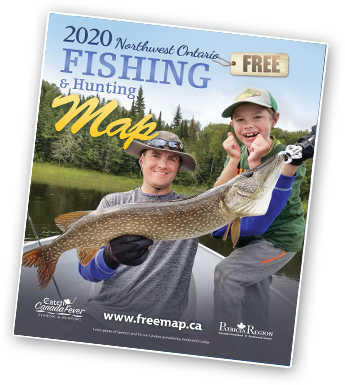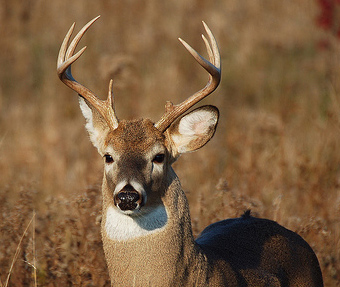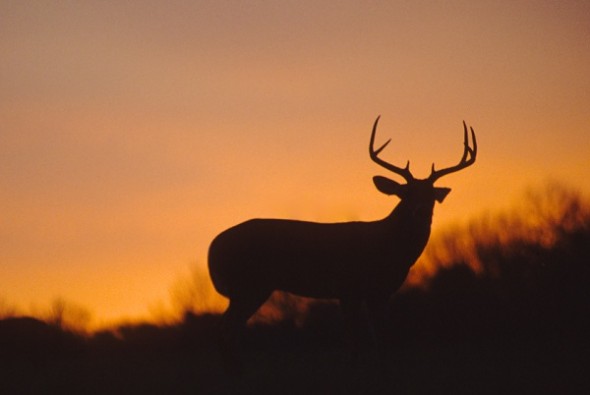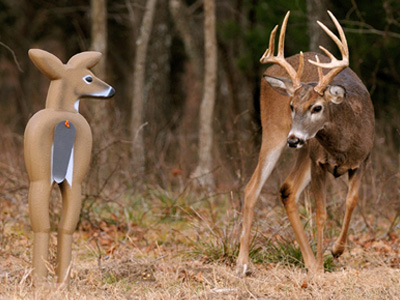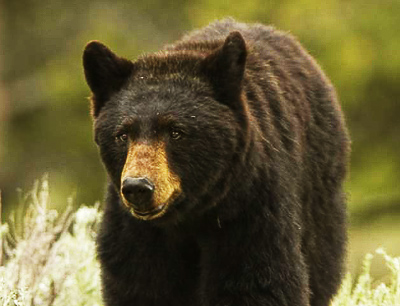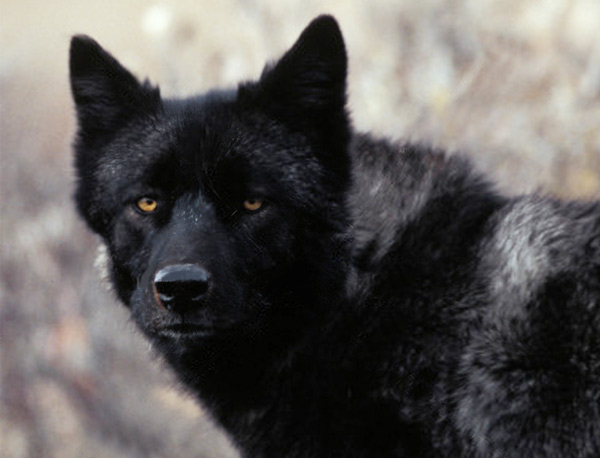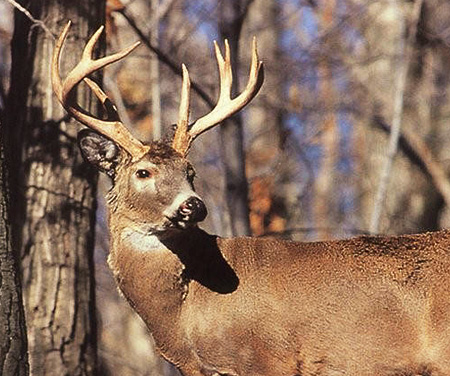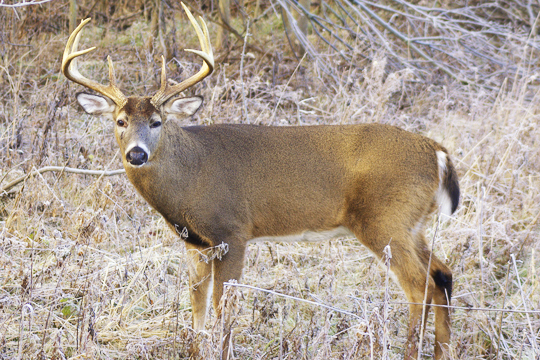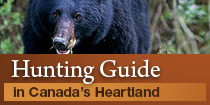Even though they are still known as grey wolves, most wolves caught are still classified as tawny by the fur trade. The same holds for most trappers in our region.
The trapping season for wolves begins shortly after moose season ends. Moose hunting can be some serious fun just about anywhere; and many a hunter spends more than 2 weeks perched in their blinds, watching and waiting. They use copious amounts of Moose urine, and also Mare-in-Heat urine to try and attract a bull moose. Both make excellent wolf attractors as well.
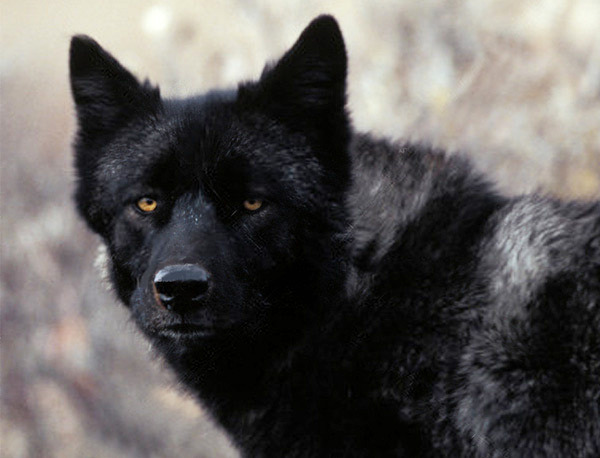 I make a point of visiting the moose hunters in my trapline territory, usually waiting until the last day as they are packing to go home. They know my passion for wolf trapping. They also know I enjoy a certain amount of success. Since fewer wolves means more moose, this makes me a well-liked person.
I make a point of visiting the moose hunters in my trapline territory, usually waiting until the last day as they are packing to go home. They know my passion for wolf trapping. They also know I enjoy a certain amount of success. Since fewer wolves means more moose, this makes me a well-liked person.
Almost every year, someone tells me of a wolf sighting, or that they heard some howling. Combining this information with my own pre-season scouting and certain techniques for targeting specific wolves, I do a better job of setting out my line.
Four years ago, a grizzled old moose hunter told me there was a black wolf living on my line. Black wolves can be almost common in other regions of Canada and Alaska, but I had never trapped one, and the possibility of doing so piqued my interest. I knew this gentlemen had been hunting the area for many years, and his freezer stayed full with moose meat each year. To say he knew the territory would be a gross understatement.
He told a fairly typical story.
He was sitting on a large boulder, overlooking a beaver pond and regenerating clear-cut thicket. One of his sons was positioned on a ridge to the east, and a second son was to the south, in the bottom along a stream. The son to the south was calling. Since moose don’t grow old by being brash, they often hang up before reaching a caller. It was hoped that the calling would pull a bull moose off the mountain, and the other son or the father would be in a position to take a shot before the moose hung up.
It was a good plan that had worked in the past. However, this time it wasn’t a moose that came to answer the calls. Instead, a pack of wolves showed up. They drifted by the old French-Canadian hunter as he sat unmoving on the rock. He wasn’t sure exactly how many wolves passed, as they appeared and disappeared through the brush. However, he was certain one wolf was – “noir comme un ours” – as black as a bear.
Neither the moose caller nor the other son saw the wolves.
The old gentleman had no sooner finished his story than I knew I wanted that black wolf pelt. Every time someone tells me they have seen a wolf, I wish I had seen it. Whenever I see a wolf track, I want to know where the wolf was gong, where it came from, and why. If I found a wolf trail, I want to set a snare on it. Should I discover where wolves are making their territory, I want to set a trap.
The timing of the sighting was good, just before trapping season. The location was good, too, in an area I knew wolves crossed regularly. I already had locations near by that I was planning to set, even if the moose hunter hadn’t reported seeing any wolves – let alone a black one.
Sometimes a moose hunter will say something that helps me discover a pack member’s personal trail. Such was not the case. My examination of the area didn’t reveal any new set locations. I believed that the wolves had crossed where they had simply because that was the best way for them to check out the moose calling. If the caller had been 100 yards in a different direction, or if the wind had been blowing from another cardinal point, their approach might have been different. Added to this was the concentration of human hunters in the area that day, which, undoubtedly, affected where the wolves travel.
Still, the sighting of the black wolf made me focus on that area. Where I might have set 2 snares, I set three. I am always careful with my tracks and scent. Now, I was paranoid.
But all of this extra effort was for nothing. I caught no wolves where the hunter saw them. As far as I could determine, they didn’t come back. I did catch a wolf near where the son was calling. It was a nice wolf, but it wasn’t black.
The only unusual catch I made was an all terrain vehicle. My trapline is logging country, and old roads are everywhere. With time, these return to brushy trail, and the animals use them as highways. A well-set snare in the right location can be deadly. The skill is in determining the exact location to set the snare. Not every place on an old road will produce fur, and even fewer locations will allow the trapper to skin wolf fur. The skill is in determining the exact location to set the snare. Not every place on an old road will produce fur, and even fewer locations will allow the trapper to skin wolf fur.
ATV traffic is the main problem. Few hunters hike into the brush these days – they ride. Any trail is susceptible to this traffic. But most of the time, if the trail is brushy enough, the riders avoid it. And these are the trails I typically set with snares. The local hunters know to stay off the side trails of my trapline for the first month of the season.
When I am out talking to the moose hunters, I ask them how they like the peace and quiet of their moose hunt. Then I remind them that they didn’t see me in the woods scouting while they were hunting. The message usually gets through.
But the fellow on this particular ATV was one of the slow learners. He thought that he’d only be squashing my fox snares flat, and that i wouldn’t be any wiser to who had done it. When the wolf snare wrapped around his bumper, he thought he was stuck on a rock. From what he told me, he shifted his machine into 4-wheel drive and punched the throttle. the ATV whipped around, and one end of the bumper was bent. My snare was still good.
We are still on the best of terms. In fact, I believe his telling this story to everyone he knows helps me to have the tranquility required to trap wolves.
Over the summer, I hoped the wolf was still out there. It’s not easy being a wild creature, even if you are the top of the food chain. Starvation and disease are a constant threat. Moose can and do kill wolves with a single might kick. Wolves kill other wolves in a territorial or pack dispute. And, I’m not the only trapper around. Wolves often cover several or more traplines in their wanderings. Added to this are the roads wolves must cross.
Danger is everywhere, and while the odds of a pack surviving are great, those of an individual wolf are smaller. I heard of no sighting of a black wolf during this time.
My desire to catch the black wolf was rekindled on opening day of the following trapping season. I was setting a jack pine plantation, installing snares and blind sets, and then covering other locations with footholds. All of the snares were set for wolf, fox or lynx.
I am a firm believer in blind, odor-free snare sets, and the best way to ensure this is to not handle any baits or urine, so I rarely set snares and make baited snares on the same round.
I was on my second loop of the area, making the scent posts and dirthole sets. As I drove up a hill that overlooked a dried up beaver pond, I saw something black moving through the belt-high grass and brush. “Bear,” I thought. But then a better look made me change my mind. “That’s no bear,” I said out loud. “That’s a wolf!”
I gunned the truck up the hill while grabbing the binoculars off the dash. I didn’t get a second look, But I was indeed convinced that I’d seen the black wolf.
It was time to do something quickly, or nothing at all. The wolf had pulled a U-turn when it became aware of the truck, and it was going in the direction where I had set snares up less than an hour earlier.
I wanted the animal high-tailing it out of there, as opposed to warily scenting its way as it trotted down a trail towards one of my blind sets. I wanted the wolf thinking about what was behind it, not what lay ahead.
I decided to try and spook it. I honked the horn. I even got out of the truck slamming the door and yelling. I waited 15 minutes and then went back to check my snares. They were undisturbed.
I faced another decision.
I had several foot set for fox in the area. One, a scent post set, was within a few hundred feet of where the black wolf had been. It was a good location, and the trap was a 4-coiled No.2 on a long-chained grapple. Plenty enough trap for a fox, but not a wolf.
“Should I just pull the set?” I thought. It often takes a wolf a long time to swing back, I had probably given it a good scare with my honking and shouting nonsense. Plus, fox are quick to catch. Within a few days, I figured I would have the fox and could change things then.
I did catch the fox pretty quickly. But I remade the set using the same trap, figuring I still had time to set for the wolf later, and besides, trap placement for a fox is much different than trap placement for a longer-legged wolf.
I figured that if the wolf did swing by, it wouldn’t get caught furthermore, the trails the wolves usually took were more to the north and east, and I had those well blocked with snares. Of course, I was wrong on all of the above. A pack of wolves came through the plantation from a completely new direction. One got caught in the fox trap and pulled the jaws off as soon as the grapple snagged onto something solid. It was not the first time a wolf has destroyed one of my traps.
They left the same way they came, so my snares sat empty. Had the black wolf been caught briefly in that fox trap? I had no way of knowing. All wolf sign in that area stopped for the remainder of the season. I did catch a reddish wolf where the moose caller had been the previous year.
The following season, I set the area using the knowledge I had so painfully gained. The pack swung by, and I got three in one check. But no black. The next morning I had another. It was grey, too.
Several months later I picked up another three tawny wolves in the area. As I was bringing them out, other wolves followed my dog team and I.
Was the black wolf a member of either pack from which I had harvested wolves? Had the black wolf seen its mates snared?
Once again, I had no way of knowing. I do know that I kept tabs on three wolves in that area throughout the summer.
Then, in early September, a local conservation officer told me a driver reported a wolf sitting on the side of the road, within a kilometer of where I had seen the black wolf.
The warden checked it out and surmised the wolf had been hit by a car. It was gone before he got there. He thought it crawled away to die.
The warden said the motorist had not described the wolf as being black, but he never asked either. Two weeks before trapping season opened, cone harvesters began working in the jack pine plantation. The second week, a lone wolf left tracks around their vehicles.
On opening day, I set the area thoroughly. But I caught no wolves and didn’t even see any tracks there that year.
About a month into the season, I heard a trapper about 25 miles east of me caught a black wolf, a thin female that weighed about 70 pounds. It was not a young animal and had gotten it’s caught at a bait station. I rarely use bait stations, even though they are efficient fur getters. At a bait station, a trapper places a large pile of some sort of carcass meat and then sets snares at various access points.
Usually the wolves caught at bait stations are young. Sometimes they are betas that have left or have been expelled form the pack. Other times, they are deposed alphas. Being alone, these wolves have difficulty finding food, so they ignore their instincts and succumb to the temptation of an easy meal. If the wolf is an old, experienced one, the snow often tells the following tale:
The wolf circles the bait, approaching openings the trapper has guarded with snares. The wolf approaches a snare, brakes hard then backs up. It then approaches the bait through the brush. Once it has eaten the wolf takes off fast – through an opening and into a snare. It’s as if the wolf suddenly realizes that it has done a foolish thing. It panics and just wants out. How else can you explain an animal being less wary on a full stomach?
I don’t know why that black wolf went to a bait pile. I don’t know if it was the same wolf I had seen. I could only guess.
The following summer and fall I found no wolf tracks in the area, and that following trapping season, I caught no wolves where the moose hunter had seen the black wolf.
Last summer, I found new tracks in the area, but I didn’t set the area hard, just a couple of snares out of habit. They did not produce, during trapping season, the snow showed me more tacks. I found new trails. I moved my snares.
All winter I paid attention. I saw where wolves killed and ate a deer. I saw where they drove snowshoe hares in front of one another. Wisps of fur and green stomach content showed me where they snacked. Where I saw their tracks follow moose, I hoped of their success.
Next season, I’ll set snares in the same area again, perhaps the black wolf passed on her genes.


